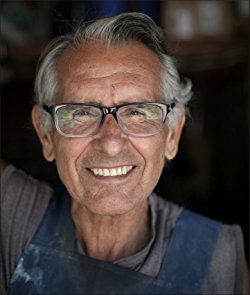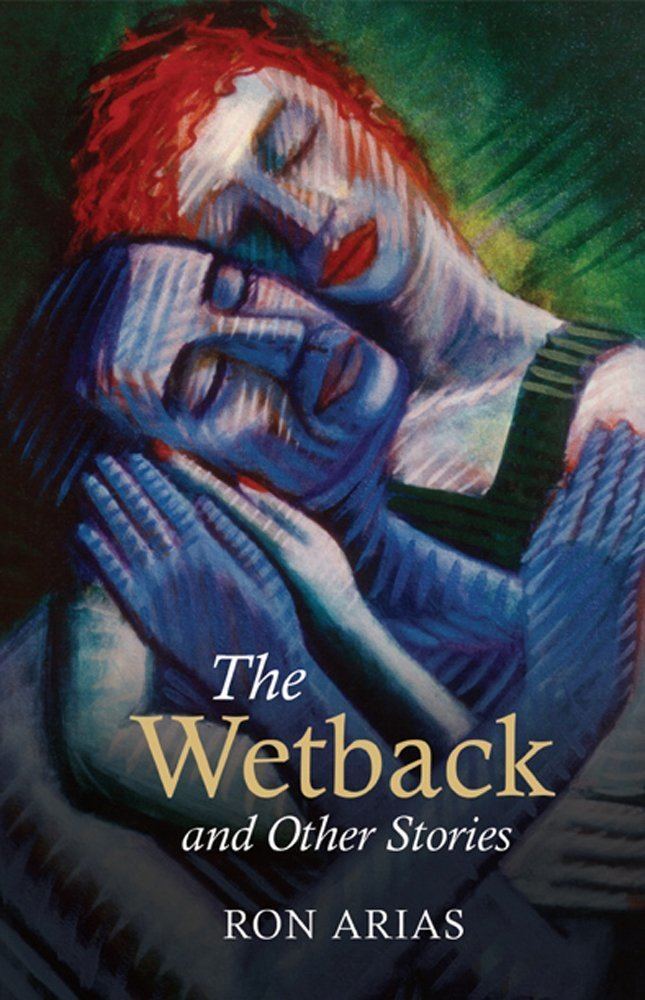Occupation novelist, journalist Name Ron Arias Nationality US Role Writer | Children Michael Arias Spouse Joan | |
 | ||
Education University of Buenos Aires, Stuttgart American High School Books The road to Tamazunchale, Five Against the Sea, Moving target, El camino a Tamazunchale Similar People Michael Arias, Mehmet Oz, Juan Rulfo, Horacio Quiroga, William Faulkner | ||
Author Ron Arias in Conversation with UCLA Professor Héctor Calderón
Ronald Francis Arias (born November 30, 1941) is a former senior writer and correspondent for People magazine and People en Español. He is also a highly regarded author whose novel The Road to Tamazunchale has been recognized as a milestone in Chicano literature.
Contents
- Author Ron Arias in Conversation with UCLA Professor Hctor Caldern
- Life Flashing Before My Eyes
- Early life
- Journalism
- Literary work
- The Road to Tamazunchale
- The Wetback and Other Stories
- Personal life
- Awards and honors
- Fiction
- Non fiction
- Notable articles
- References

About Arias' most recent work of fiction, The Wetback and Other Stories (2016), author Paul Theroux writes, "I felt reading these wonderful stories that I was admitted to an adjacent neighborhood, a rich culture that is another world—call it Amexica—both mysterious and magical, that is persuasive through its tenderness. My hope is that Ron Arias continues to write short stories that tell us who we are."

Life Flashing Before My Eyes
Early life

A Los Angeles native, Arias spent his early years in a neighborhood located between the Los Angeles River and Elysian Park known as Frog Town or Elysian Valley, the allegorical setting for much of his fictional work.
Journalism
Arias' journalism career began in 1962 in Argentina working for the English-language daily newspaper, Buenos Aires Herald. Later, he became a Peace Corps volunteer near Cusco, Peru, contributing to the Christian Science Monitor an eyewitness account of a massacre of farmers by government troops. He also worked for a year on the Daily Journal in Caracas, Venezuela, thereafter publishing as a freelancer to various publications, including The Nation, the Los Angeles Times, Hispanic Link, and Nuestro magazine.
In 1985 Arias began work as a People magazine senior writer with a global beat. His feature byline stories focused on all manner of people in war, famine, hurricanes, earthquakes and other calamities.
Of his time as the magazine's parachute journalist, Arias has said, "On every continent, I covered five wars, famine, earthquakes, hurricanes, all kinds of disasters in Haiti, Somalia, Ethiopia, Australia, Vietnam, Moscow, you name it." His first major disaster article was the 1985 Mexico City earthquake, which he was assigned simply because he was the only staff member fluent in Spanish.
Literary work
Arias' work is influenced by twentieth-century Latin American literature and he has been called "a post-modernist who integrates in his fiction a keen eye for actual Mexican-American experience."
The Road to Tamazunchale
Arias' best known work is the novel The Road to Tamazunchale, for which numerous critical studies exist. The Road to Tamazunchale depicts the last days of Fausto Tejada, an old widower being cared for by his teenage niece in Los Angeles and occasionally visited by the spirit of his dead wife. Fausto spends his final days in a number of fantastic scenarios that suggest magic realism.
Tamazunchale, while a real place, serves here as a metaphorical place, a magical place where wishes come true but that can never really be reached; the real town is never shown in the novel, but is used in the fantastical play that Fausto and his neighbors create called "The Road to Tamazunchale". The novel radically breaks with the tradition of Chicano literature that focuses on learning to understand reality, constructing a Chicano version of history and bringing order to the world. Instead, Arias' protagonist is more a creator of worlds than an interpreter of them.
Chicano Literature: A Reference Guide's entry for Arias describes The Road to Tamazunchale as a breakthrough work of Chicano fiction:
It may be that future historians of American literature will look back on The Road to Tamazunchale as critics now look at Joyce’s Portrait of the Artist as a Young Man: as the foundation piece by which Joyce emerges from the matrix of his marginal, minority culture to transform its localism into enduring and lucid literary symbols relevant to the universal human experience.
A feature film adaptation of The Road to Tamazunchale entitled Fausto's Road is in the works.
The Wetback and Other Stories
According to Arias himself, The Wetback and Other Stories, a collection of short stories inspired by the Mexican-American denizens of the Elysian Valley of his youth, is an attempt to "bridge the white world and the darker Spanish-speaking world":
They are right next door, they are in our backyards, they take care of our kids, they wash our dishes... who are these people? This is who they are. It's a literary treatment or peek at that but... I want to humanize Mexicans or people from my kind of background, not just Mexicans, but all Latin Americans because I do have their perspective.
Personal life
While a student at UCLA, Arias met and quickly married his wife Joan, then working towards her doctorate in Hispanic languages and literature. Their only son is filmmaker Michael Arias, currently residing in Tokyo, Japan.
Arias is an accomplished potter (retiring from People having ignited a previously dormant passion for the fine arts).
